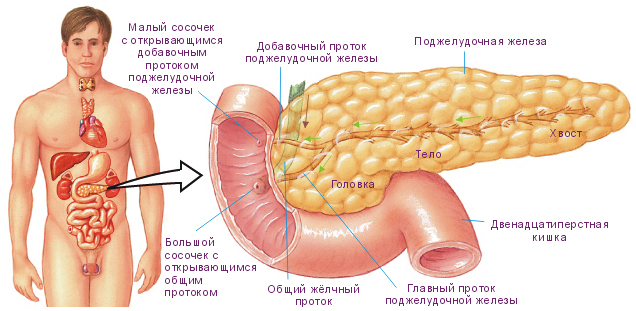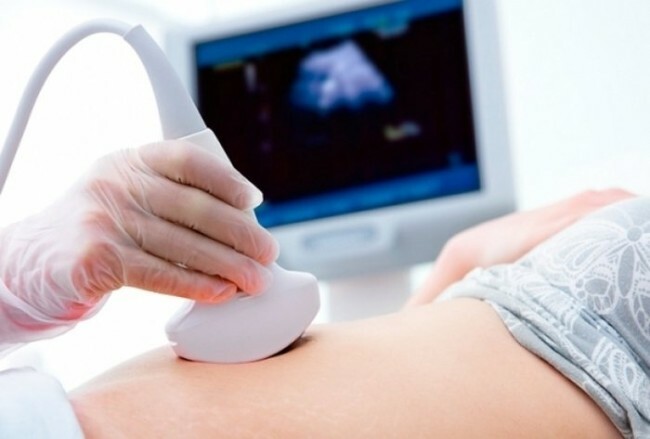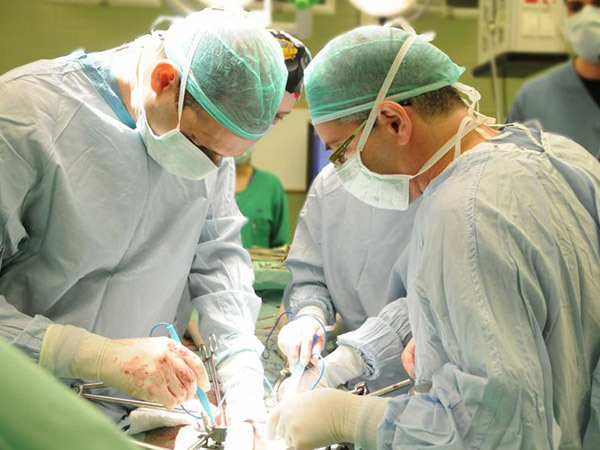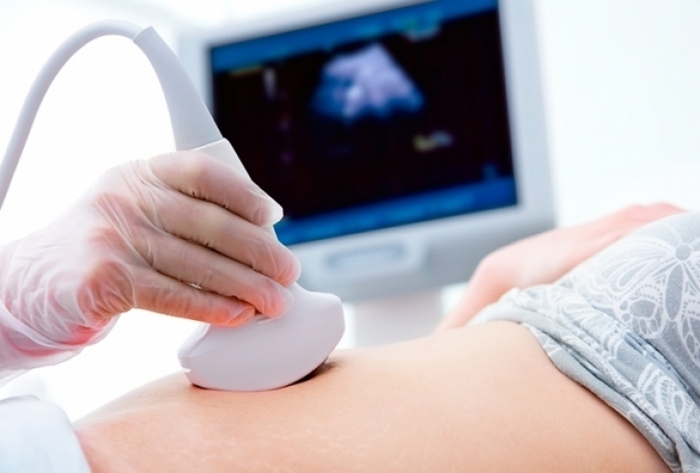Life after removal of the pancreas
Pancreas removal is a radical solution. Under what conditions is the operation to remove the gland justified?
Can a person live without a pancreas? How will the operation affect the quality of life? What to do after removal? The answers to these and other questions are presented in the article.
Indications and desirability of removing pancreatic
Contents:
- Indications and desirability of pancreatic removal
- Postoperative period
- Diet after operation
Pancreas is the organ of the digestive system located behind the stomach, between the small intestine and the spleen.
This largest gland in the digestive system consists of:
- heads;
- of the body;
- of the tail.
The pancreas is part of the endocrine system. The iron is responsible for the production of insulin, glucagon, polypeptide.
Pancreatic disorders cause diabetes mellitus, the development of acute and chronic pancreatitis.
With these pancreatic diseases live for many years if they adhere to a diet and fulfill all the prescriptions of the doctor.
The pancreas produces substances that are involved in the breakdown of fats, proteins, carbohydrates, facilitate the assimilation of nutritious components of food.

The main function of the pancreas is to break down the food into small particles. A person who has lost the pancreas, disappears the necessary link of digestion, which is responsible for the ingestion of nutrients into the body.
In addition, the pancreas produces insulin, which is responsible for the absorption of glucose and helps beneficial substances to be absorbed into the blood.
The functioning of the gland is affected by various factors:
- alcohol abuse;
- improper power;
- smoking;
- heredity;
- is a congenital malformation;
- metabolic disorder( metabolism).
Operations on the pancreas are always risky. It is difficult to predict how the surgical procedure will be performed and give a favorable prediction in advance.
Even in cases where surgery is performed on organs near the gland, acute pancreatitis can develop.
Conservative treatment is performed before surgery.
Only after confirmation of infection of dead tissue or the appearance of a pancreatic tumor, surgical intervention is prescribed.
First of all, find out the causes of inflammation and the type of tumor. Often causes inflammation of gallstone disease, so remove the stones, if not help, then the gallbladder.
After the inflammation of the gland, a false cyst( tumor) may appear. Prolonged inflammation in the pancreas can cause the development of a malignant tumor. Such a neoplasm in the pancreas behaves aggressively.
Similar tumors are fast-growing. Symptoms of the manifestation of the disease depend on the location of the focus.

In case of neoplasm in the head of the pancreas, narrowing of the bile ducts occurs, which causes yellowing of the skin of the face, if the tumor is in the body or tail of the pancreas, then pains in the abdominal cavity or back pain are felt.
Therefore, despite the complexity of the operation, there are cases when it can not be avoided:
- malignant tumors;
- exacerbation of pancreatitis;
- pancreatic necrosis;
- injury to the body;
- bleeding.
During a pancreatectomy, the surgeon removes either completely the organ, or only some part of the pancreas.
Under certain circumstances, the organs near the gland are also removed: gallbladder, spleen, partially stomach or intestine, lymph nodes.
During surgery, complications may occur: bleeding or infection.
Therefore, it is important to eliminate the causes that contribute to the occurrence of complications:
- is overweight;
- power supply;
- smoking;
- alcohol.
The appointment of the operation takes into account the patient's general health and age.
Postoperative period
Allocate partial and complete organ removal. With significant damage to the organ, a large tumor, when partial removal does not help, remove the entire gland.
There are two types of operation to remove. If the tumor is localized in the head of the gland, then remove the head with a fragment of the small intestine.
It is often necessary to remove part of the stomach with the gallbladder and lymph nodes. If the formation in the tail, then remove the tail, the body of the gland, the spleen with the vessels.
It is difficult to predict in advance how the operation will pass.
Possible postoperative complications:
- bleeding;
- infection;
- pancreatitis.
Even if there are no complications, long-term rehabilitation is needed. To the body to recover, you need time and strict compliance with the prescription of the doctor. After removal of the body, there is often an inadequate production of hormones.
In addition to the physical condition, the psychological mood is important. It is difficult to overestimate the need for moral support, because surgery is stress for the body.
Video:
Pancreas removal leads to diabetes mellitus, metabolic disorders. The modern level of medicine allows a person to live even without such an important organ.
At the same time, it is necessary to observe the strictest diet, health control, frequent tests, lifelong hormone replacement therapy( enzyme preparations - insulin or glucagon), compliance with bed rest.
The doctor will determine when to get up and how much to sit. All this is important so that no pressure ulcers or clots are formed.
If the removal of the pancreas was only partial, the rest of the organ fills the lost function.
Perhaps, insulin and hormones will not be needed, and it will be possible to limit oneself to a diet, a healthy way of life, control of sugar in the blood.
Diet after the operation
Despite the fact that it is difficult to predict how the body will behave after removal of the organ, much depends on the patient and care for him. Smoking and alcohol withdrawal is necessary.
A healthy diet should become a necessary condition of life: the
- is intravenously administered several days after surgery. Independently they will be allowed to drink only a little water;
- after 3 days in the diet, tea with a small breadcrumb of wheat flour is introduced;
- when the body adapts, the food is expanded with soup-puree and omelets;
- then introduce cereal, mashed vegetables, fish soufflé;
- on the tenth day introduce new products, watching the reaction of the body;
- about fried, fatty and smoked food will have to be forgotten forever.
Before entering a new product, you should consult your doctor. Limit flour, starchy, spices, whole milk, sweets.
It is important that the diet contains proteins, minimizes fats, carbohydrates and sugars. Food is taken in small portions every 2 hours, drinking a day should be at least a liter of water.
Video:
Food intake is limited at night - only a glass of low-fat kefir is allowed. Often additionally prescribed vitamin-mineral complexes.
After removal of the pancreas, nutrition is reduced to the following principles:
- twisted boiled low-fat fish and meat;
- low-fat dairy products are allowed, except for whole milk;
- allowed crackers, vegetarian soups, unsweetened fruits and steamed dishes.
Pancreas removal is not an easy decision, the goal of which is to save life.
Even if the prognosis is favorable, further life will require medical supervision and medication for the rest of your life. But a lot of people this operation gave the opportunity to live.



